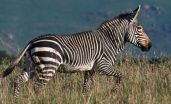These gigantic whales have nerves like bungee cords
2015-05-04
(Press-News.org) Nerves aren't known for being stretchy. In fact, "nerve stretch injury" is a common form of trauma in humans. But researchers reporting in the Cell Press journal Current Biology on May 4 have discovered that nerves in the mouths and tongues of rorqual whales can more than double their length with no trouble at all.
"These large nerves actually stretch and recoil like bungee cords," says A. Wayne Vogl of the University of British Columbia. "This is unlike other nerves in vertebrates, where the nerve is of a more fixed length that has enough slack in it to accommodate changes in position of the structures the nerves are supplying."
Those stretchy nerves support the animals' unique and extreme lunge feeding strategy, which helps to support the whales' gigantic bodies.
Rorqual whales represent the largest group among baleen whales, weighing in at an impressive 40 to 80 tons. To eat, the whales open their mouths and lunge while their tongues invert and their mouths fill like giant water balloons full of floating prey. Those prey are concentrated by slowly expelling the water through baleen plates. The volume of water brought in with a single gulp can exceed the volume of the whale itself.
"Rorqual whales attained large body size with the evolution of a bulk filter feeding mechanism based on engulfing huge volumes of prey-laden water," Vogl says. "This required major changes in anatomy of the tongue and ventral blubber to allow large deformation, and now we recognize that this also required major modifications in the structure of nerves in these tissues so they could withstand the tissue deformation."
Vogl and his team hadn't expected this at all. They made the discovery after a member of the lab picked up a dull white cord-like structure and stretched it. Vogl recalls him saying something like, "Wow, look at this."
It looked like a blood vessel, which ought to be stretchy. But they realized upon closer inspection that it was a nerve -- one unlike any they'd ever seen before. The nerves of other species are generally surrounded by a thin collagen wall, and any stretch can pull and damage the nerves.
What the researchers see in these whales is something entirely different. The nerve fibers themselves are packaged inside a central core; they don't stretch so much as unfold. A very thick and stretchy outer wall full of elastin fibers that Vogl likens to elastic bands surrounds that nerve core.
The researchers don't know yet whether anything similar will turn up in other animals -- the ballooning throats of frogs, for example, or the long and fast tongues of chameleons.
They plan to keep studying the whales' nerves in greater detail, in hopes of understanding better how the nerve core is folded in such a way to allow its rapid unpacking and re-packing as the entire structure is stretched and then relaxed again.
INFORMATION:
Current Biology, Vogl et al.: "Stretchy nerves are an essential component of the extreme feeding mechanism of rorqual whales" http://dx.doi.org/10.1016/j.cub.2015.03.007
Current Biology, published by Cell Press, is a bimonthly journal that features papers across all areas of biology. Current Biology strives to foster communication across fields of biology, both by publishing important findings of general interest and through highly accessible front matter for non-specialists. For more information please visit http://www.cell.com/current-biology. To receive media alerts for Current Biology or other Cell Press journals, contact press@cell.com.
[Attachments] See images for this press release:


ELSE PRESS RELEASES FROM THIS DATE:
2015-05-04
University of British Columbia (UBC) researchers have discovered a unique nerve structure in the mouth and tongue of rorqual whales that can double in length and then recoil like a bungee cord.
The stretchy nerves explain how the massive whales are able to balloon an immense pocket between their body wall and overlying blubber to capture prey during feeding dives.
"This discovery was totally unexpected and unlike other nerve structures we've seen in vertebrates, which are of a more fixed length," says Wayne Vogl of UBC's Cellular and Physiological Sciences department.
"The ...
2015-05-04
BOSTON, MA - The Emergency Department (ED) is at the convergence of the opioid epidemic as emergency physicians (EPs) routinely care for patients with adverse effects from opioids, including overdoses and those battling addiction, as well as treating patients that benefit from opioid use. Increasingly, EPs are required to distinguish between patients who are suffering from a condition that warrants opioids to relieve pain, and those who may be attempting to obtain these medications for other purposes, such as abuse or diversion. Overall, opioid pain reliever prescribing ...
2015-05-04
(MEMPHIS, Tenn. -- May 4, 2015) Researchers led by St. Jude Children's Research Hospital scientists have identified a mechanism that helps leukemia cells resist glucocorticoids, a finding that lays the foundation for more effective treatment of cancer and possibly a host of autoimmune diseases. The findings appear online today in the scientific journal Nature Genetics.
The research focused on glucocorticoids, a class of steroid hormones. These hormones have been key ingredients in the chemotherapy cocktail that has helped to push long-term survival for the most common ...
2015-05-04
(MEMPHIS, Tenn. - May 4, 2015) St. Jude Children's Research Hospital scientists have developed a significantly better computer tool for finding genetic alterations that play an important role in many cancers but were difficult to identify with whole-genome sequencing. The findings appear today in the scientific journal Nature Methods.
The tool is an algorithm called CONSERTING, short for Copy Number Segmentation by Regression Tree in Next Generation Sequencing.
St. Jude researchers created CONSERTING to improve identification of copy number alterations (CNAs) in the ...
2015-05-04
COLUMBIA, Mo. -- Within the knee, two specialized, C-shaped pads of tissue called menisci perform many functions that are critical to knee-joint health. The menisci, best known as the shock absorbers in the knee, help disperse pressure, reduce friction and nourish the knee. Now, new research from the University of Missouri shows even small changes in the menisci can hinder their ability to perform critical knee functions. The research could provide new approaches to preventing and treating meniscal injuries as well as clues to understanding osteoarthritis; meniscal problems ...
2015-05-04
(New York -- May 4, 2015) Icahn School of Medicine at Mount Sinai researchers presented several landmark studies at the 2015 American Association for Thoracic Surgery (AATS) meeting in Seattle.
AATS Highlights include:
First Successful 3D Printed Trachea
A team of researchers from Icahn School of Medicine have combined 3D printing technology with human stem cells to create the first successful 3D-printed biologic tracheal graft in an animal model. Using a biocompatible polymer, researchers created a customized 3D-printed tracheal graft seeded with stem cells. The ...
2015-05-04
CORVALLIS, Ore. - The decline of the world's large herbivores, especially in Africa and parts of Asia, is raising the specter of an "empty landscape" in some of the most diverse ecosystems on the planet, according to a newly published study.
Many populations of animals such as rhinoceroses, zebras, camels, elephants and tapirs are diminishing or threatened with extinction in grasslands, savannahs, deserts and forests, scientists say.
An international team of wildlife ecologists led by William Ripple, Oregon State University distinguished professor in the College of ...
2015-05-04
Scientists have created microbe-sized beads that can utilize energy in the environment to self-propel upstream by purely physical means.
Life is hard to define, but metabolism, mobility and replication are three commonly agreed elements. The beads are not alive, but they meet two of these three requirements.
"Living systems change their behavior according to their environment," said Jeremie Palacci, a professor of physics at the University of California, San Diego. "So the question was, can we design a particle that can sense its environment with no neural system or ...
2015-05-04
Contrary to popular belief, more healthy kids' meals were ordered after a regional restaurant chain added more healthy options to its kids' menu and removed soda and fries, researchers from ChildObesity180 at Tufts University Friedman School reported today in the journal Obesity. Including more healthy options on the menu didn't hurt overall restaurant revenue, and may have even supported growth.
Researchers examined outcomes before and after the Silver Diner, a full-service family restaurant chain, made changes to its children's menu in order to make healthier items ...
2015-05-04
PHILADELPHIA - The Lariat device, which has been cleared by the U.S. Food and Drug Administration (FDA) for soft tissue approximation (placement of a suture) during surgical procedures, is associated with a significant incidence of death and urgent cardiac surgery during its frequent off-label use to prevent stroke in patients with the irregular heartbeat known as atrial fibrillation. Following a systematic review of case reports and an FDA safety database, researchers at the Perelman School of Medicine at the University of Pennsylvania are calling for formal controlled ...
LAST 30 PRESS RELEASES:
[Press-News.org] These gigantic whales have nerves like bungee cords




